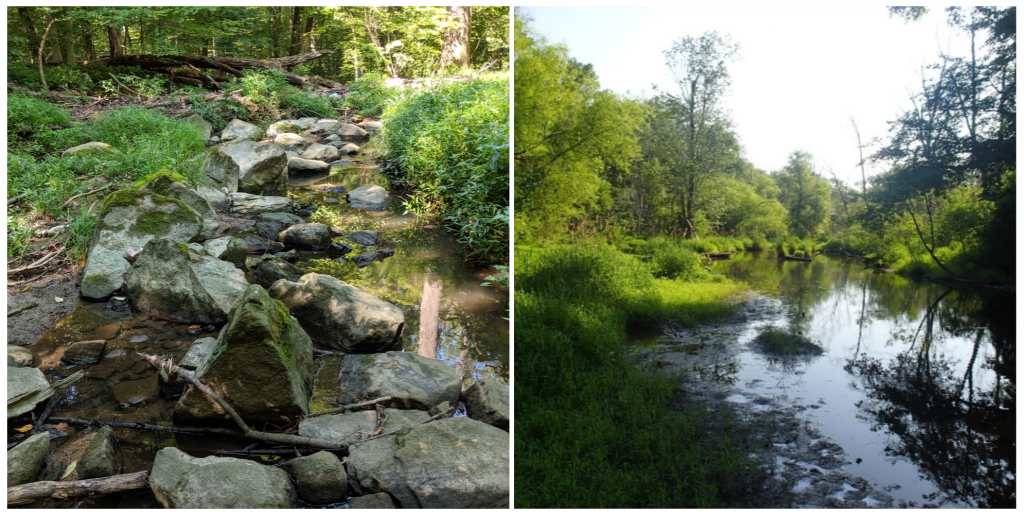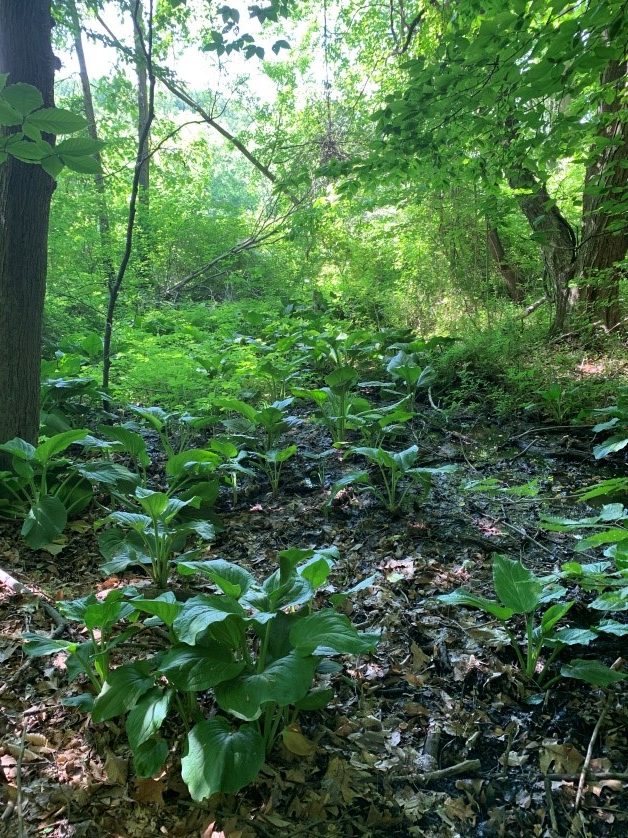
Facebook Twitter Instagram YouTube
Written on: September 16th, 2019 in Education and Outreach
By Erin Dorset and Kenny Smith, DNREC’s Wetland Monitoring and Assessment Program
If you spend a lot of time traveling around Delaware, you’ll notice that northern Delaware is very different from the rest of the state. That’s because Delaware is made up of two distinct geologic regions. The northernmost part of Delaware is within the Piedmont region, while the rest of Delaware lies within the Coastal Plain region.
The Coastal Plain is relatively flat and is characterized by small hills, gradual slopes, and sandy or silty stream beds. In contrast, the Piedmont region tends to have bigger rolling hills, steeper slopes, some small cliffs, and stream beds with more rocks, much like a lot of Pennsylvania.
Landscape characteristics play a big role in determining what kinds of wetlands occur in different areas. So, there tend to be differences in the wetlands in the Piedmont and Coastal Plain regions. Through our years as wetland scientists, doing fieldwork all over Delaware, we have made some first-hand observations about wetlands in these two geologic regions. For example, we have seen that flat wetlands are one of Delaware’s most common wetland types in the Coastal Plain, yet they are fairly uncommon and often smaller in size in the Piedmont because of more varied terrain.
Another observation that we’ve made is that riverine wetlands are often larger in the Coastal Plain. Streams and rivers in that region typically have gradual banks, allowing water to easily overflow into floodplain areas. In contrast, riverine wetlands that we’ve seen in the Piedmont region are often smaller, and many waterways do not have any riverine wetlands along them at all. This is because stream banks tend to be higher and steeper, and streams are often found at the bottoms of slopes, so flood waters do not cover as much land when the banks overflow. The slope of the land also tends to drain water off more quickly, so floodplain areas may not stay wet for as long.


Yet another thing that we have noticed is that seepage wetlands are more common in the Piedmont region than in the Coastal Plain. Seepage wetlands are wetlands formed in places where groundwater comes out onto the surface year-round or nearly year-round. Some of them are closed-canopy seeps, meaning that they are within the forest and create the headwaters of some streams. They are usually dominated by skunk cabbage and are small and narrow in size and shape. Others are open-canopy seeps, which are wet meadows fed by closed-canopy seeps. These have few trees and shrubs and a wide variety of herbaceous plants. Seepage wetlands tend to form at the bases of slopes, which is why they are prevalent in the Piedmont region and are not as common in the Coastal Plain.
Curious about making some of your own observations? Check out some of these parks and forests that will let you compare and contrast the Piedmont and Coastal Plain regions of Delaware!